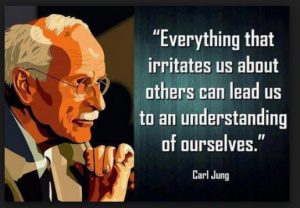Of the things I have learned so far in this course, three concepts that stand out to me are heuristics, stereotyping and discrimination, and emotional intelligence. These are universal concepts that are involved in many social situations.
I first learned the term “heuristics” in a Cognitive Psychology course. In that course, the term was touched on as part of the process of retrieving information from one’s long term memory storage. In this Social Psychology course, the details about the different types of heuristics clarified the process for me.
I learned how heuristics may be involved in the second concept, stereotyping and discrimination. After writing about heuristics in the first Assignment Takeaway, it occurred to me that they may be involved more often than we think in social conflict involving perceived racism (Assignment 3 Takeaway). That is, we often respond with whatever comes to mind quickly rather than taking the time to think about a situation rationally.
The third concept, emotional intelligence, also seems to have influence on more than one area of study. Knowing one’s own emotions and feelings is important for self-regulation (Blog 7) and for personal relationships (Assignment 4 Takeaway) and social communication (Blog 8).






